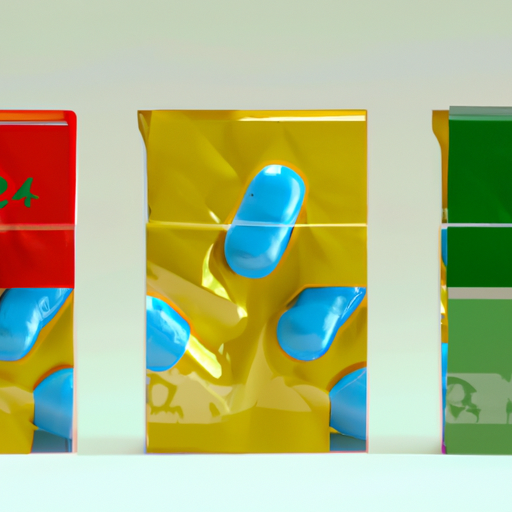
-
Table of Contents
Pharmaceutical Packaging: Balancing Safety and Attractiveness

Pharmaceutical packaging plays a crucial role in ensuring the safety and efficacy of medications. It not only protects the product from external factors but also provides important information to healthcare professionals and patients. However, in addition to safety considerations, pharmaceutical packaging also needs to be attractive and user-friendly. This article explores the delicate balance between safety and attractiveness in pharmaceutical packaging, highlighting the importance of both aspects and providing valuable insights into the industry.
The Importance of Safety in Pharmaceutical Packaging
When it comes to pharmaceuticals, safety is of paramount importance. Packaging serves as the first line of defense against contamination, tampering, and degradation. It protects the medication from moisture, light, and oxygen, which can all have detrimental effects on the product’s stability and efficacy. Additionally, proper packaging prevents accidental ingestion by children and ensures that the medication reaches the end-user in its intended form.
One of the key safety features in pharmaceutical packaging is child-resistant closures. These closures are designed to be difficult for children to open, reducing the risk of accidental ingestion. According to a study published in the Journal of Pediatrics, child-resistant packaging has significantly reduced the number of pediatric poisoning cases. The study found that child-resistant packaging reduced the rate of accidental ingestion by 45% for prescription medications and 80% for over-the-counter medications.
Another important safety consideration is the use of tamper-evident packaging. Tamper-evident features, such as seals or breakable caps, provide visible evidence of tampering, ensuring that the medication has not been compromised. This is particularly important for medications that are prone to abuse or counterfeiting.
The Role of Attractiveness in Pharmaceutical Packaging
While safety is crucial, pharmaceutical packaging also needs to be attractive and user-friendly. Attractive packaging can enhance the overall patient experience and improve medication adherence. A study published in the Journal of Pharmaceutical Sciences found that patients were more likely to comply with their medication regimen when the packaging was visually appealing and easy to use.
Attractive packaging can also help differentiate a product in a crowded market. With numerous medications available for the same condition, pharmaceutical companies need to create packaging that stands out and captures the attention of healthcare professionals and patients. This can be achieved through innovative design, the use of vibrant colors, and engaging graphics.
Furthermore, user-friendly packaging can improve patient satisfaction and reduce medication errors. Clear labeling, easy-to-read instructions, and intuitive dosing devices can all contribute to a positive user experience. According to a study published in the Journal of Patient Safety, medication errors are a leading cause of preventable harm in healthcare settings. User-friendly packaging can help mitigate these errors and improve patient safety.
Case Studies: Balancing Safety and Attractiveness
Several pharmaceutical companies have successfully balanced safety and attractiveness in their packaging designs. One notable example is the packaging for the asthma inhaler, Advair Diskus. The packaging features a distinctive purple color, which helps patients easily identify their medication. The inhaler is also equipped with a dose counter, ensuring that patients can track the number of doses remaining. This user-friendly design improves medication adherence and reduces the risk of running out of medication.
Another case study is the packaging for the birth control pill, Yaz. The packaging uses a unique blister pack design that includes a reminder system. The blister pack is divided into four sections, each labeled with a different day of the week. This design helps patients remember to take their pill daily, reducing the risk of missed doses and unintended pregnancies. The packaging also includes clear instructions and a calendar to track the start of each new pack.
The Future of Pharmaceutical Packaging
The pharmaceutical packaging industry is constantly evolving to meet the changing needs of patients and healthcare professionals. In recent years, there has been a growing focus on sustainability and eco-friendly packaging solutions. Pharmaceutical companies are exploring alternatives to traditional plastic packaging, such as biodegradable materials and recyclable options.
Additionally, advancements in technology are revolutionizing pharmaceutical packaging. Smart packaging, which incorporates sensors and electronic components, can provide real-time information about medication usage and adherence. This technology has the potential to improve patient outcomes and reduce healthcare costs by enabling healthcare professionals to monitor patient compliance remotely.
Key Takeaways
- Safety is of paramount importance in pharmaceutical packaging, protecting medications from contamination, tampering, and degradation.
- Child-resistant closures and tamper-evident features are crucial safety measures in pharmaceutical packaging.
- Attractive packaging enhances the patient experience, improves medication adherence, and helps differentiate products in a crowded market.
- User-friendly packaging reduces medication errors and improves patient safety.
- Case studies, such as Advair Diskus and Yaz, demonstrate successful examples of balancing safety and attractiveness in pharmaceutical packaging.
- The future of pharmaceutical packaging includes a focus on sustainability and eco-friendly solutions, as well as advancements in smart packaging technology.
Conclusion
Pharmaceutical packaging plays a critical role in ensuring the safety and efficacy of medications. Balancing safety and attractiveness is a delicate task that requires careful consideration of both aspects. While safety features such as child-resistant closures and tamper-evident packaging are essential, attractive and user-friendly packaging can enhance the patient experience, improve medication adherence, and differentiate products in a competitive market. The future of pharmaceutical packaging lies in sustainable and eco-friendly solutions, as well as advancements in smart packaging technology. By prioritizing both safety and attractiveness, pharmaceutical companies can create packaging that not only protects the product but also enhances the overall patient experience.
